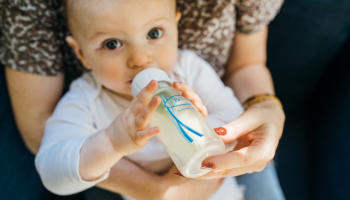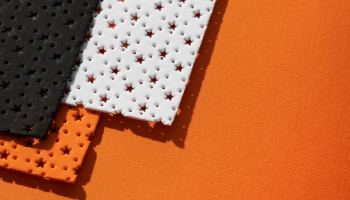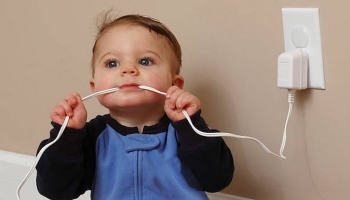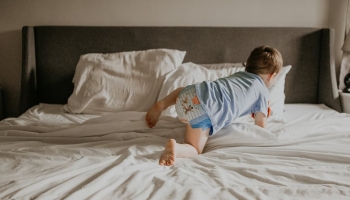Babies like to be entertained and a lot of the time they’re learning as they play. Play mats and play gyms not only keep them happily occupied but can also help with their development.
What is a baby play mat?
A baby play mat is a mat which uses contrasting colors and textures (and sometimes shapes) to stimulate your baby and encourage them to move, play and learn. Some mats also incorporate sound The idea behind a play mat is to encourage your baby to move around on the floor, either on their tummy or by crawling.
A baby gym is a free-standing arch (usually in plastic, sometimes in wood) with toys hung from it. Baby gyms are intended to encourage babies to reach up off the floor.
What is a Baby Gym?
A baby gym is a free-standing arch (usually in plastic, sometimes in wood) with toys hanging from it. Baby gyms are intended to encourage babies to reach up off the floor.
Are baby mats and gyms safe?
Assuming you choose ones which are made by a reputable manufacturer and meet the necessary standards, then, yes, they’re a completely safe place for baby play. In fact, they can even make your baby safer, especially when you’re out of your home because they are obvious to adults (and older children) too and so they act as a way to mark out the “baby play” area in a room and politely encourage people to respect it.
Are play mats and baby gyms necessary?
Technically no, but they have so many developmental benefits and are so affordably-priced, it’s easy to justify buying them. As a bonus, mats can be easily carried so they’re great for keeping your little one entertained when you’re out on a visit. Play gyms are, obviously, bulkier but even they will generally fold up easily so you can pop them in the car. Alternatively, most play gyms let you detach the toys to use somewhere else.
How does a baby mat or baby gym help physical development?
Although baby mats and baby gyms are some of the simplest toys around, they do a lot to encourage your baby’s development. Here are four of skills they encourage.
Independent movement
The stimulation offered by the mat or gym encourages your baby to forget any nerves they had about not being in your arms or at least holding your hand. That encourages them to move. This not only gives them healthy exercise but also helps to develop motor skills such as hand-eye coordination.
Play gyms are particularly useful here as the toys are deliberately placed in a way that means babies are encouraged to “work for the win” so managing to grab one gives them a real sense of achievement.
All this exercise also helps to strengthen muscles in preparation for further development. In particular, it encourages the development of core strength (from the neck through to the chest, back and abdomen) and also strength in the arms and hands. This is really important for encouraging your little one to push themselves up and eventually to roll and crawl.
Visual perception
Very young babies can see most clearly when something is 20-35CM from their face. In the very early days, they can only really recognize faces with any degree of confidence. This is one of the reasons why they love having adults looking at them from up close.
Then they recognize highly contrasting colors, especially black and white. They generally start to perceive depth at about four months which is also the time they start to recognize the link between cause and effect.
These two skills tend to feed into each other. Babies begin to perceive objects which are further away from them and try to grab at those objects. Some of these grabs will succeed and some will not. With practice, your little one will figure out what works and what doesn’t and in the process, they will improve their hand-eye coordination.
Cognitive development
Tummy time can also be thinking time. As your child plays, they’ll learn about cause and effect (if I touch here this happens and if I touch here this happens). They’ll come to recognize colours and patterns and this sensory stimulation will also stimulate their imagination. You can help this along by getting on the mat too and playing with them. Try to activate both sides of your baby’s body. For example, lie down on their right side first so they move their head to the right and then move to their left side.
Language skills
This is really an offshoot of cognitive development, but it’s important enough to mention on its own. When you take the time to interact with your baby and explore the mat or gym with them, you teach your baby about two-way communication and improve their language skills.
What to Consider When Choosing a Play Mat/Play Gym
When choosing a play mat or play gym, consider the following factors:
Safety
Ensure the play mat or gym is made from non-toxic materials and meets safety standards. Avoid small parts or choking hazards.
Size and Design
Select a mat or gym with enough space for your baby to move and play comfortably. Look for colorful and visually stimulating designs to engage their attention.
Texture and Sensory Features
Choose mats or gyms with different textures, fabrics, and sensory elements like mirrors, crinkle toys, or rattles to stimulate your baby’s senses.
When should I start using an activity mat or activity gym?
You can use an activity mat when you start to introduce tummy time. That’s usually around the one-month mark. Activity gyms only start to be fun when babies start to reach for objects voluntarily (as opposed to reflexively). That’s usually around the three-month mark.
Usually, babies get the most use out of activity mats and activity gyms when they are between three and six months of age. They’ll then start to grow out of them, although they may continue to play with them for another few months before moving on completely.
Baby mats and tummy time
Up until the 1990s, it was common for babies to sleep on their stomachs. In the 1990s, however, it was discovered that it was actually safer for babies to sleep on their backs. Since then, therefore, that has been the standard and safety has improved. Of course, the fact that babies were sleeping on their backs meant that they were spending much less time on their stomachs, hence the concept of “tummy time” was introduced.
Although it’s now been around for about 30 years, there’s still a lot of confusion about it so let’s explain what it is, why it matters and how baby mats can help.
Tummy time itself is a position, not an activity. In other words, a baby should do something while they’re on their stomach. That something may be relaxing (even sleeping). Ideally, however, it should be something active to get their muscles working.
The reason for this is that a lot of a baby’s development milestones are based on their ability to be face down. For example, a baby needs to be able to pull themselves up off their stomach to be able to crawl.
This is all great, sadly, however, babies vary widely in how readily they take to being placed on their stomach. Some are fine with it. Many, however, resist it, at least at first. If your baby falls into the latter category, then there are two steps you can take to address the issue.
The first is to introduce tummy time gradually. For example, start by holding your baby higher on your shoulder so that they have to learn to control their head. Then put them on your chest or tummy while they are relaxing.
Move on to holding your baby on their side (one hand under their neck, one hand between their legs, both hands linked) and lifting them up so they’re looking down. Start placing them, tummy down, on your legs and change the elevation of your legs depending on how they take to the process. Use a low elevation if they’re just getting used to it and as they get comfortable, raise your legs closer to the horizontal.
When you’re really getting serious about tummy time, start putting your baby on their stomach, lying across your lap. Keep their face turned to the side and support their head. This is also a great way to soothe your baby if they have colic, in which case rub their back too.
When you first put them on the ground, you might want to try putting a rolled-up towel (or your legs) underneath their upper chest. Some babies find this a comfortable way to get started, others don’t like it at all. You’ll just have to see how your baby feels about it. If your baby likes it then you might want to invest in a special pillow to make them a bit more comfortable.
Once you’ve established that tummy time doesn’t have to be miserable, it’s time to up your game and make it fun. That’s where mats and play gyms can help. By engaging your baby in play, they turn a learning and development experience into a game.
Choosing a play mat/play gym
Here are some features to check when buying a mat or gym.
A washable/wipe-down cover
Anything which goes near a baby needs regular cleaning. This is why washable covers are standard on good-quality baby products.
Plenty of padding
Padding is what keeps your baby both comfortable and safe. Ideally, there should be an area with extra padding, or a cushion, for when your little one is just getting used to being on their tummy.
Strong, contrasting colors
A lot of mats will be based on black and white as babies learn to recognize these very early. Other mats, however, will use a wider variety of colors. Either approach is fine just as long as there’s plenty of contrast. Ideally, there will be some patterns and/or shapes in there as well for extra visual stimulation.
A mirror
Babies learn to recognize faces very quickly and just love looking at them. Providing them with a mirror is a great way to keep them engaged and happy.
A selection of useful toys
Even if you just have a mat, not a gym, it’s handy to have at least some toys. Ideally, you’ll have some loose toys on the mat (although you could just use toys from around the house) plus some toys dangling from a bar for your baby to grab.
It’s useful if you can detach the provided toys and use them elsewhere and it’s even better if you can swap out toys to create variety, especially as your baby develops.
Modern baby mats also tend to have a range of options for auditory stimulation. This can be anything from old-school squeaks and rattles to playing music. Some now have lights.
In principle, the more toys and activities you offer the more you can induce baby play. In practice, the benefits of adding more options do tend to fade out after a while and in some cases, those benefits can actually turn into drawbacks as your baby winds up overstimulated.
A travel bag
One of the great benefits of baby mats as compared to some other baby products (such as bouncers) is that they are super easy to take with you on the move so you can find time for a spot of baby play (almost) wherever you are. Even baby gyms are fairly easy to transport. A travel bag doesn’t have to be a deal-breaker. In principle, you can use any bag you have, but they can be very convenient.
Bottom Line
A play mat and play gym is a great way to help babies reach their developmental milestones. In particular, it encourages them first to be on their tummies and then to get up off them, roll, crawl, and grab things.
If you have the budget and think your little one would enjoy it, you can get mats and gyms with various functions, including lights and music. If, however, money is tight or you are concerned that too many options will lead to issues with overstimulation, then you can go for a more basic option.
What matters is that you keep your child safe, which means looking for mats with plenty of padding and washable covers (to keep them clean) and gyms with robust construction. After that, even a primary option with just patterns, textures, and colors will do just fine, and if you can add a baby-proof mirror, too, that’s even better.
Frequently Asked Questions
Are foam mats good for babies?
Foam mats are suitable for babies as they provide a soft and safe play area, protecting against bumps and falls. Choose non-toxic mats without small parts and supervise your baby during playtime.
What can I use instead of a playmat?
Alternatives to playmats include blankets, rugs or carpets, and interlocking floor tiles. Ensure the area is hazard-free, and supervise your baby during playtime.
Should I put a newborn in a bassinet?
Yes, placing a newborn in a bassinet is recommended. Bassinets offer a safe and cozy sleeping space, convenient for feeding and comforting. Follow safe sleep guidelines and transition to a crib when appropriate.
From what age can babies use play mats?
Babies can start using play mats from birth. Playmats provide a safe and comfortable surface for infants to play and explore.








